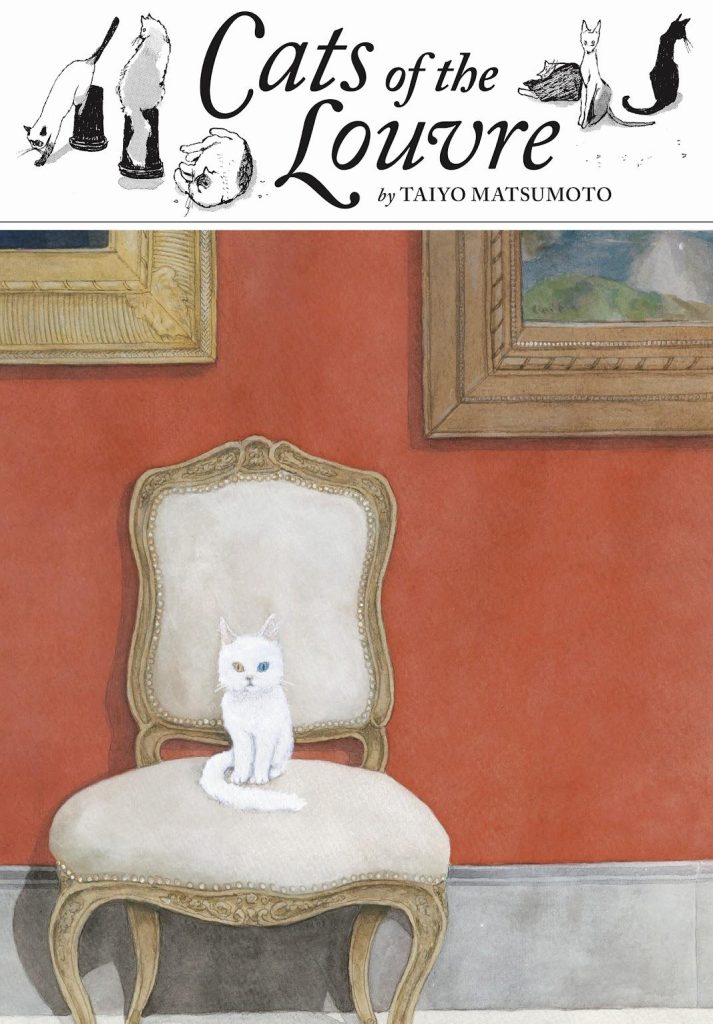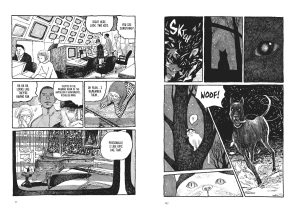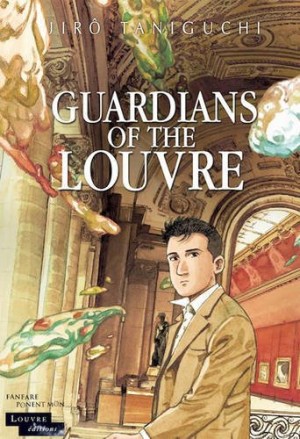Review by Frank Plowright
Every year the Parisian Louvre museum commissions a graphic novel promoting its collection, with the selected creator given no additional parameters. Taiyo Matsumoto wasn’t the first Japanese creator to contribute to the run, but Cats of the Louvre broke the mould by extending to two volumes in the original edition, covering the sponsorship for 2017 and 2018. They’re combined in English for this hefty hardcover.
St Petersburg’s equivalent artistic treasure store the Hermitage genuinely houses cats which seem to have been transferred to the Louvre for Matsumoto’s purposes. The museum’s night staff are aware of their attic lair, but not their mystical other lives, supplied by Matsumoto as small human-like cats given motivation for their presence, primarily a fear of the streets personified by the dangerously morose Sawtooth. He resents the youthful Snowbébé’s casual attitude to being spotted, yet cover star Snowbébé is the only cat to interact with the art.
The Louvre’s collection manifests via tour guide Cécile, a turning point coming when she tours a class of schoolchildren around. Two are still present when she and a pair of night guards witness the impossible. The impossible is feasible because each chapter reveals a secret. Some are less amazing than others, but in merging a fairy tale world where the cats have more definable personalities with the quest for a missing child and also with magical elements, Matsumoto delivers something bordering on beguiling, but never consistently enough.
In order to differentiate worlds, Matsumoto switches his art. There’s a feral quality about the cats in their alternate personalities, yet a lovingly reverential precision when it comes to presenting the Louvre and its contents. A mystical sequence late on is rendered in grey wash. The moods skip from tragic through darkly comic and playful, but whatever the tone, the art is admirable.
A painting titled The Funeral Procession of Love is reproduced at the beginning, attributed to Henri Lerambert in 1580, and depicting Cupid’s funeral. The meaning is less important to Matsumoto than the joyous detail, which is used for almost a couple of chapters of life within what’s seen and the surroundings. Actual immersion in a painting or drawing is something every imaginative child has wished for at some stage, and Matsumoto manages to make Arietta’s experience simultaneously joyful and heartbreaking, Arietta happy, but unaware of what’s been sacrificed.
Overall Cats of the Louvre is an ambitious, yet frustrating work. It’ll certainly appeal to those immersed in the mystique of cats, and there’s an admirable selection of art referenced in passing, including the nice homage to Jiro Taniguchi at the end. However, for all the fleeting comments about our relationship to art, the literal immersion is as indulgent and obvious as the Louvre visitor who only wants to tick off the Mona Lisa. Questions are raised, but never answered, and it leaves a towering triumph of illustration that doesn’t engage where necessary.





